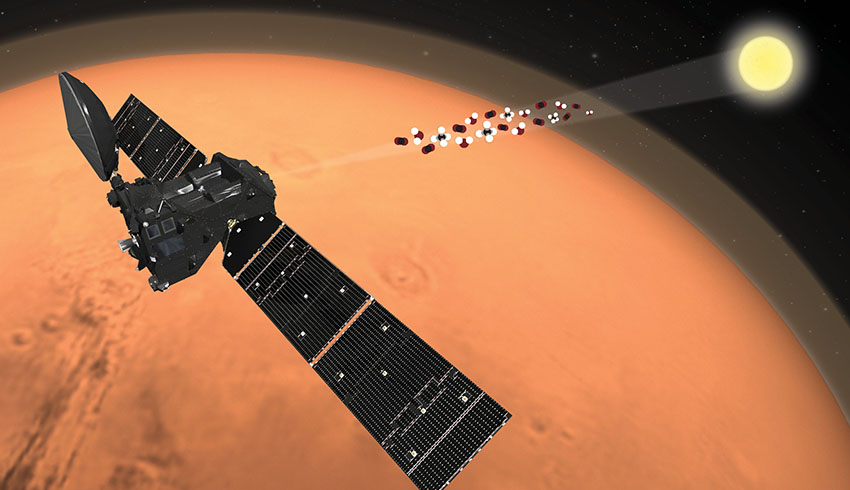The joint ESA-Roscosmos ExoMars Trace Gas Orbiter, or TGO, arrived at the Red Planet in October 2016 and spent more than a year using the aero-braking technique needed to reach its two-hour science orbit, 400 kilometres above the surface of Mars.
Håkan Svedhem, ESA’s TGO project scientist, said, "We are delighted with the first results from the Trace Gas Orbiter. Our instruments are performing extremely well and even within the first few months of observation were already providing exquisite data to a much higher level than previously achieved."
TGO’s main science mission began at the end of April 2018, just a couple of months before the start of the global dust storm that would eventually lead to the demise of NASA’s Opportunity rover after 15 years roving the martian surface.
Spacecraft in orbit, however, were able to make unique observations, with TGO following the onset and development of the storm and monitoring how the increase in dust affected the water vapour in the atmosphere – important for understanding the history of water on Mars over time.
Two spectrometers onboard – NOMAD and ACS – made the first high-resolution solar occultation measurements of the atmosphere, looking at the way sunlight is absorbed in the atmosphere to reveal the chemical fingerprints of its ingredients.
This enabled the vertical distribution of water vapour and ‘semi-heavy’ water – with one hydrogen atom replaced by a deuterium atom, a form of hydrogen with an additional neutron – to be plotted from close to the martian surface to above 80 kilometres altitude. The new results track the influence of dust in the atmosphere on water, along with the escape of hydrogen atoms into space.
"In the northern latitudes we saw features such as dust clouds at altitudes of around 25-40 kilometres that were not there before, and in southern latitudes we saw dust layers moving to higher altitudes," said Ann Carine Vandaele, principal investigator of the NOMAD instrument at the Royal Belgian Institute for Space Aeronomy.
The observations are consistent with global circulation models. Dust absorbs the sun’s radiation, heating the surrounding gas and causing it to expand, in turn redistributing other ingredients – like water – over a wider vertical range.
A higher temperature contrast between equatorial and polar regions is also set up, strengthening atmospheric circulation. At the same time, thanks to the higher temperatures, fewer water-ice clouds form – normally they would confine water vapour to lower altitudes.
The two complementary instruments also started their measurements of trace gases in the martian atmosphere. Trace gases occupy less than 1 per cent of the atmosphere by volume, and require highly precise measurement techniques to determine their exact chemical fingerprints in the composition.
Methane is of particular interest for Mars scientists because it can be a signature of life, as well as geological processes – on Earth, for example, 95 per cent of methane in the atmosphere comes from biological processes.

